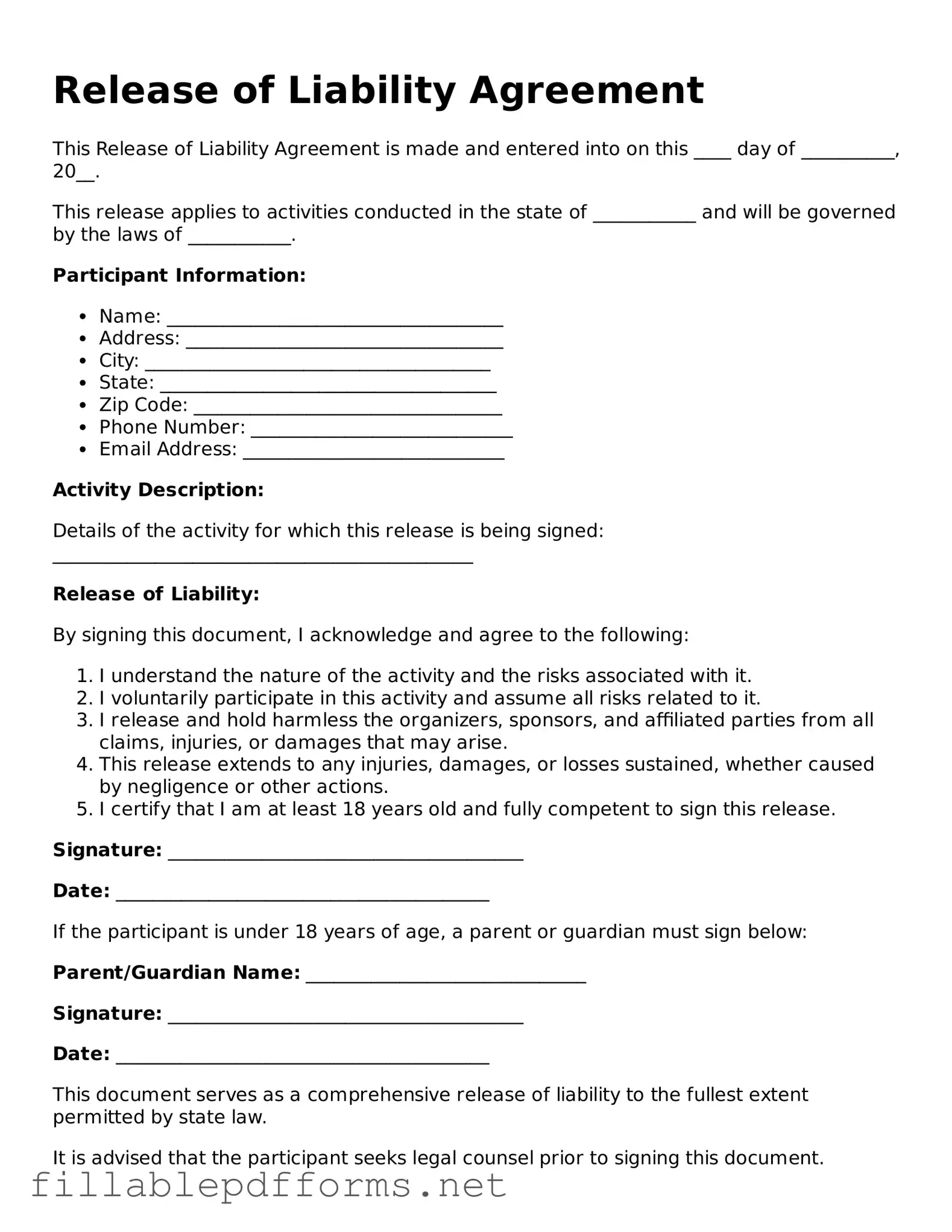The Release of Liability form serves as a critical document in various contexts, protecting individuals and organizations from potential legal claims. This form is commonly used in situations where one party wishes to waive their right to sue another party for injuries or damages that may occur during an activity or event. By signing this document, participants acknowledge the inherent risks involved and agree not to hold the other party responsible. Key components typically include a clear description of the activities involved, the risks associated with those activities, and the explicit acknowledgment of the participant's understanding of those risks. Additionally, the form often requires the signature of the participant, confirming their voluntary consent to the terms outlined. This legal instrument is essential for businesses, event organizers, and recreational facilities, as it helps mitigate liability and fosters a safer environment for all involved.
